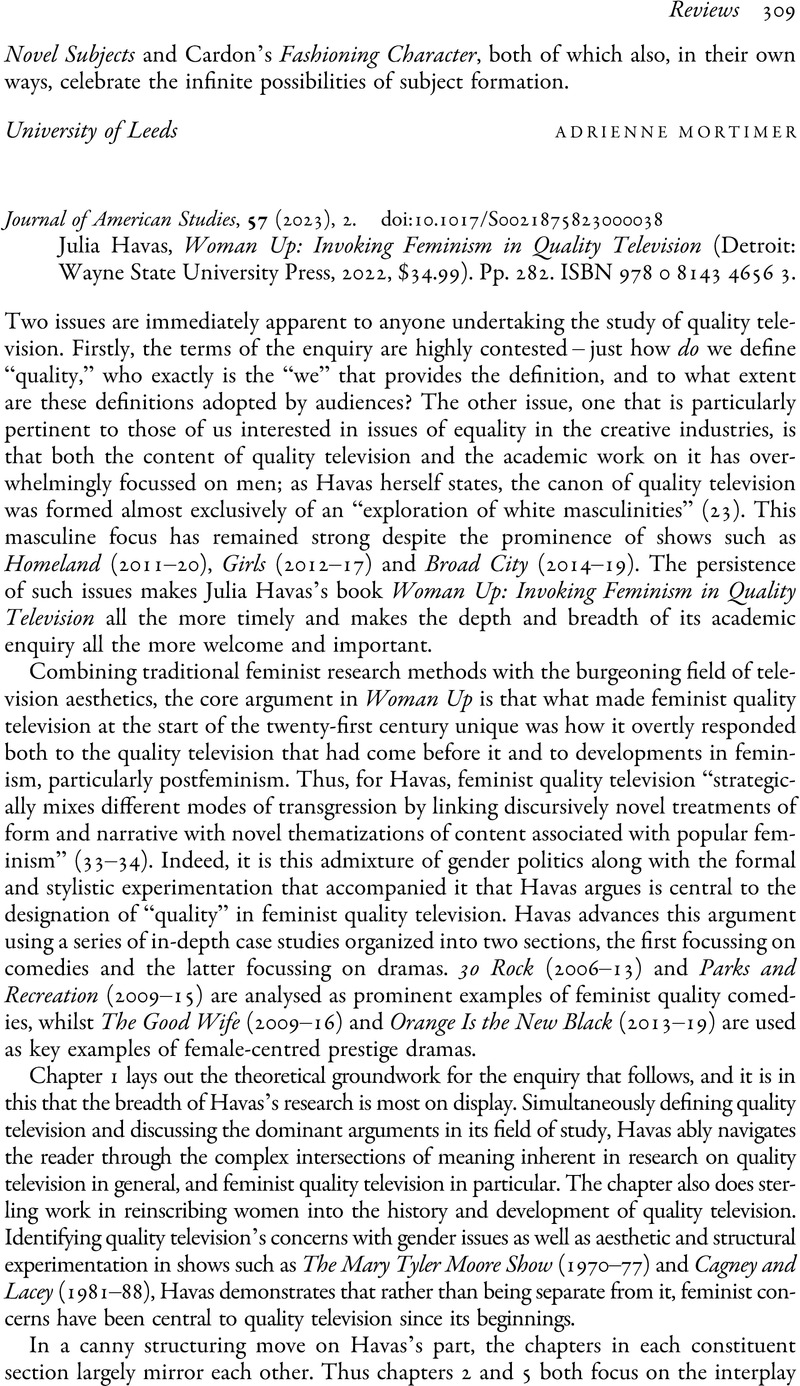No CrossRef data available.
Article contents
Julia Havas, Woman Up: Invoking Feminism in Quality Television (Detroit: Wayne State University Press, 2022, $34.99). Pp. 282. ISBN 978 0 8143 4656 3.
Review products
Julia Havas, Woman Up: Invoking Feminism in Quality Television (Detroit: Wayne State University Press, 2022, $34.99). Pp. 282. ISBN 978 0 8143 4656 3.
Published online by Cambridge University Press: 19 April 2023
Abstract
An abstract is not available for this content so a preview has been provided. Please use the Get access link above for information on how to access this content.

- Type
- Review
- Information
- Journal of American Studies , Volume 57 , Special Issue 2: Food, Health and Welfare in the Long Twentieth Century , May 2023 , pp. 309 - 310
- Copyright
- Copyright © The Author(s), 2023. Published by Cambridge University Press in association with the British Association for American Studies



